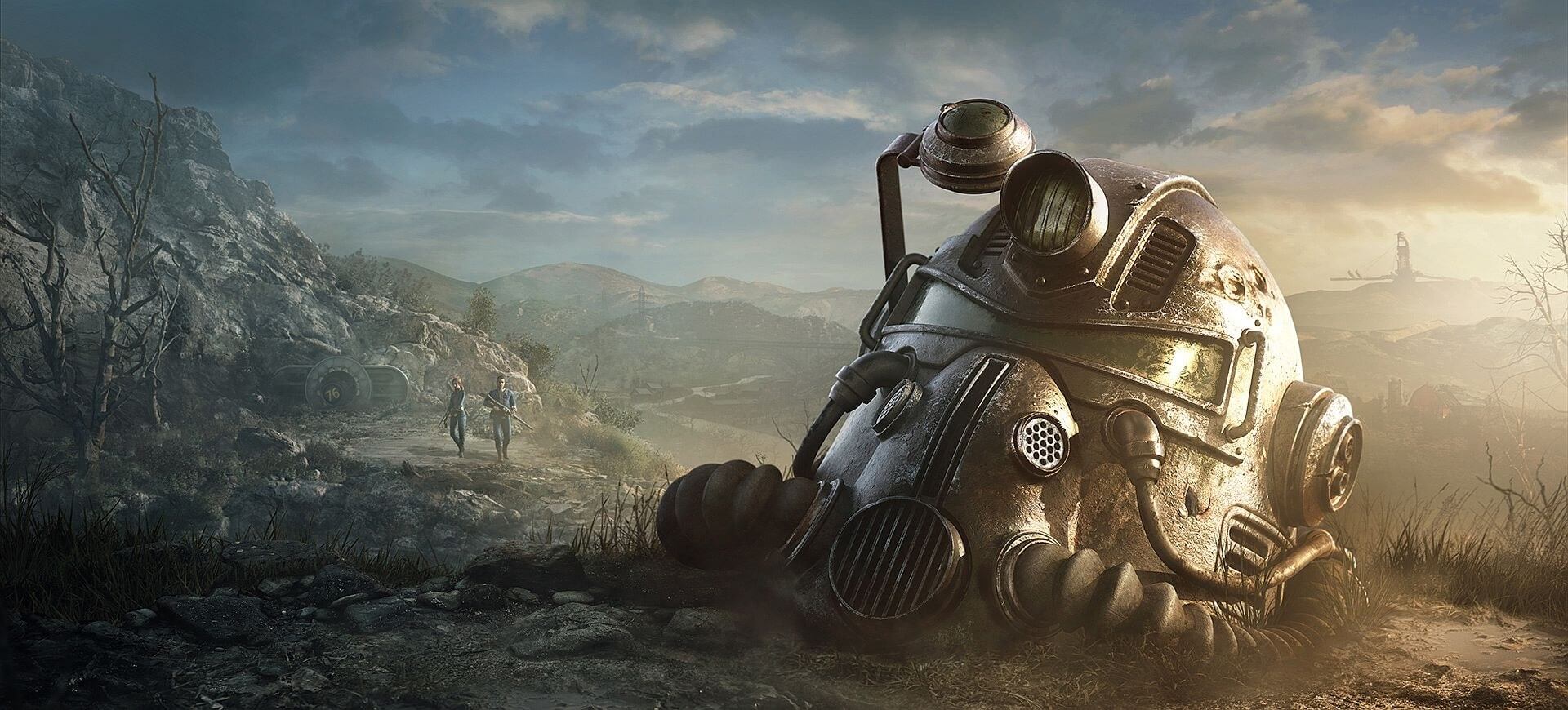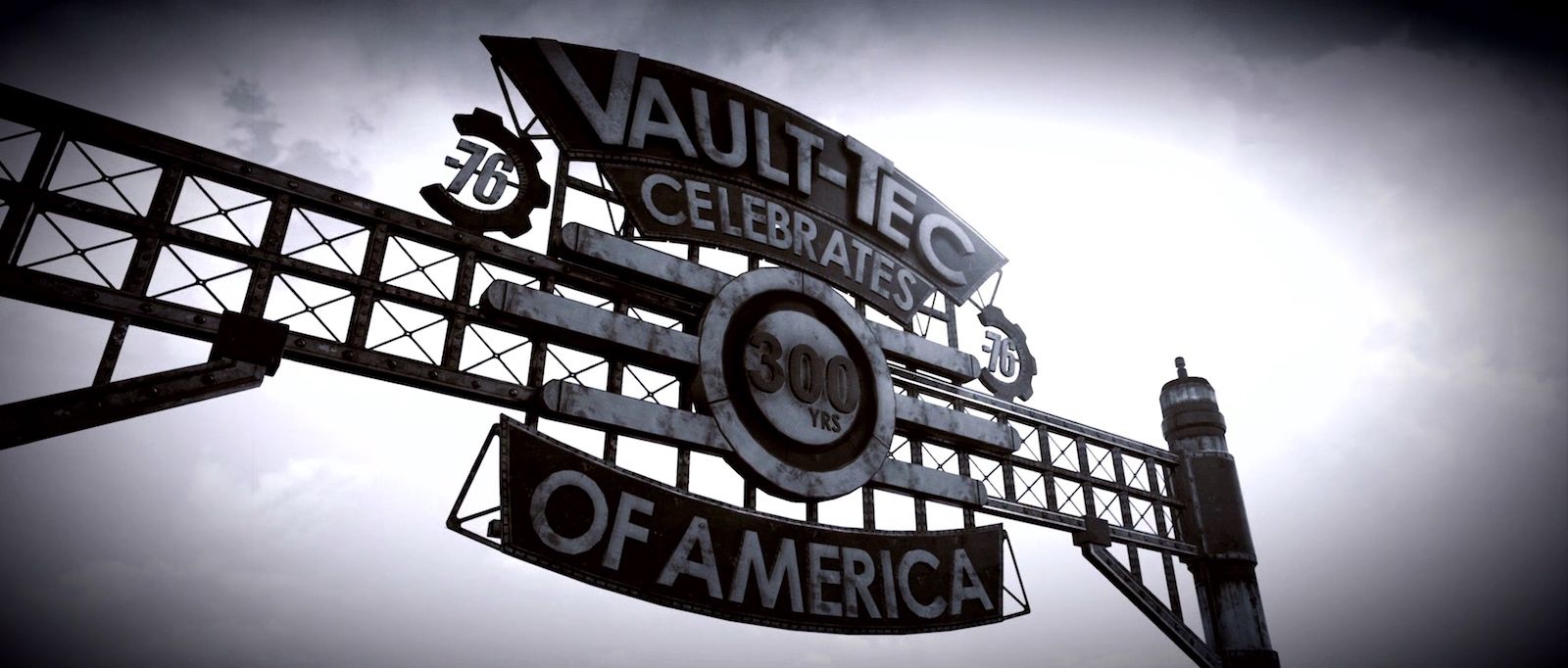In brief: Bethesda recently gave several journalists the opportunity to get some hands-on time with Fallout 76 ahead of the public beta later this month. Does the new multiplayer-only format work? How does the game compare to earlier Fallout titles? For the answers to these questions and more, we turn to the experts, each of which spent about three hours with Fallout 76.
The first thing Engadget's Jessica Conditt wants you to know about Fallout 76 is that it isn't Fallout 5:
I represent Fallout 76 design director Emil Pagliarulo's nightmare scenario.
"I think a lot about the players who want Fallout 5, and this isn't Fallout 5," Pagliarulo said in a roundtable interview after the hands-on session. "Are they gonna be happy? Are they still gonna enjoy playing this game even though it's like – I actually think we've pushed a lot closer to a much more Fallout 5-ish, single-player-friendly game, but it's still not. ...I worry about that."
Fallout 76 is an online-only game. This is a departure for the series – previous Fallout entries have been story-driven, single-player RPGs without multiplayer modes. Fallout 76, meanwhile, is packed with real-person players and it strongly encourages team-based adventuring. In fact, every human character in the game is another actual player, while the robots, mutants and creepy creatures are computer-generated NPCs.
Despite being an all-new game, Andrew Webster from The Verge ensures us that it'll feel familiar to fans of the franchise:
It looks the same, set in a gritty world of brown and grey, and the basics of playing are also similar, right down to the controls.
As with Fallout 4, it's a first-person shooter with a big focus on collecting junk and repurposing it into new weapons, armor, food, and other things that make life in a nuclear wasteland a bit easier. Your Pip-Boy serves as the game's menu, where you do everything from swap out weapons to take radiation pills. And yes, it still has a radio, so you can listen to old songs about the end of the world as you try to survive it.
That sense of familiarity extends to the game's structure, at least early on. Fallout 76 takes place in 2112, in a massive open world set in West Virginia. This is just 25 years after nuclear war decimated the planet, making it the earliest entry in the series chronologically. (Fallout 4 is set more than a century later, in the remains of Boston.) It's open in the sense that you're free to go wherever you want once you leave the vault, though you're gated somewhat by high-level monsters, which can make it impossible for brand-new players to access certain spots.
GameSpot's Alessandro Fillari dishes on combat mechanics:
With the new online focus, some returning mechanics have seen some changes. For instance, Fallout's iconic V.A.T.S.--allowing you to target enemies and fire off precisely-aimed shots--now operates in real-time. It acts more like a real-time lock-on--with your weapon's hit-rate adjusting depending on the enemy's movement or their surroundings. This style of V.A.T.S. definitely took some getting used to. Mostly to the fact that enemies move around often, and combined with the awkward focus of the V.A.T.S. camera, it was jarring to actually use it during a fight. Because of this, I mostly stuck with standard aiming and shooting, which felt more reliable during engagements. While you can upgrade V.A.T.S. with perks to make it more effective, it feels more like an option that should be used sparingly.
Dylan Bishop with PlayStation Lifestyle talks PVP combat:
Player-versus-player combat works a little differently than it does in most games. When one player attacks another, the victim takes reduced damage until they retaliate. In a sense, this means true PvP duels must be reciprocated and won't break out in every situation. It's a drawback for the initiator: you've revealed your position and intent, and the second your victim shoots you back, you'll take full damage---meaning they've already turned the tides on you. While this is an odd system, it adds an interesting meta-layer when considering team-wide conflicts. Some teams might send single members into a fight as bait, waiting in the tall brush or dense forests as enemies snipe out their friends. This is entirely possible too: the foliage and beauty of Appalachia make for the perfect espionage action zone.
Of course, the other player may not retaliate. In such a case, it's possible to continue dwindling a player's health down and kill them. If you kill a player without taking damage from them, this is known as murder (hopefully this sounds familiar to the real act, for all sound-minded readers). If you murder another player, you're labelled as such. All players disappear from your map, while you are heavily marked on theirs. You become a giant red blip, and are slapped with a hefty bounty that, should you fall in a subsequent firefight, will be paid from your own pocket.

Christopher Livingston with PC Gamer was one of the few to encounter Mothman:
I'm apparently one of the few in attendance at the Fallout 76 hands-on event to have seen a Mothman (or the Mothman, if there is just one---perhaps there are Mothmen). And it was only for the briefest of moments while running around alone in the dark.
While exploring a hilltop alone, I heard an ominous music cue. That's when I looked to my right (or left) and saw him. Mothman! Well, to be completely honest, I didn't really see Mothman. I saw the words "Mothman" on my screen, thanks to Bethesda's continued insistence on identifying every enemy you look at by displaying their name in red capital letters, even if you've never met them before or if you haven't technically spotted them with your actual eyeballs.
Which in some respects is a bit of a buzzkill. Creepy music and glowing eyes in the darkness: spooky as hell! Creepy music and the instant text-based identification of a Mothman you can't actually see: well, it was still pretty exciting, but perhaps not the best way to introduce what may be the most mysterious creature in the game. I called to my teammates, but Mothman, who I didn't really see, was already gone.
Liana Ruppert with ComicBook got to tussle with a dragon:
When exploring the beauty that is West Virginia, one Bethesda developer asked my squad if we felt up to taking on a radiated dragon. Of course we said "hell yes" enthusiastically and continued to do so even though I repeatedly got my ass kicked which you can clearly see for yourself in the video above.
As for the dragon, you can clearly see that he was massively superior to us in level and superior to me in cajones since I kept hiding - and dying - until about the second half of the video. No shame though, I got to see a freakin' dragon and as a huge lover of the more fantasy-side of RPGs, it was a pretty awesome blend of gaming experiences.
Owen S. Good with Polygon covers Bethesda's patch schedule and modding:
"We have an aggressive patch schedule," said project lead Jeff Gardiner. "We have some really great ideas for post-launch content that we can't show or talk about, but we're hoping between the uniqueness of the game and our fan base, we'll keep players in, keep them engaged. All the [post-]launch content that we have planned, that I can't talk about, we plan on making free as well."
And then there's modding, which is broadly discussed as something that will be supported eventually, although no one is hazarding even a ballpark figure at when it will arrive. Hines, regarding human NPCs, hedged his answer there a little further by suggesting that when modding arrives --- which will be dependent on private server support --- that might be the time human NPCs come to Fallout 76, in the form of community mods that players may insert into their games should they wish.
Fallout 76 launches on November 14 for PlayStation 4, Xbox One and Windows PC with the beta taking place later this month.
